Sakkarai Pongal or Chakkara Pongali is a delectable, cardamom-scented rice and lentil pudding studded with cashews and raisins. It is traditionally made to celebrate the south Indian harvest festival, Pongal, but you don't need any particular reason to eat this dairy-free version -- other than the fact that it's uncommonly delicious!
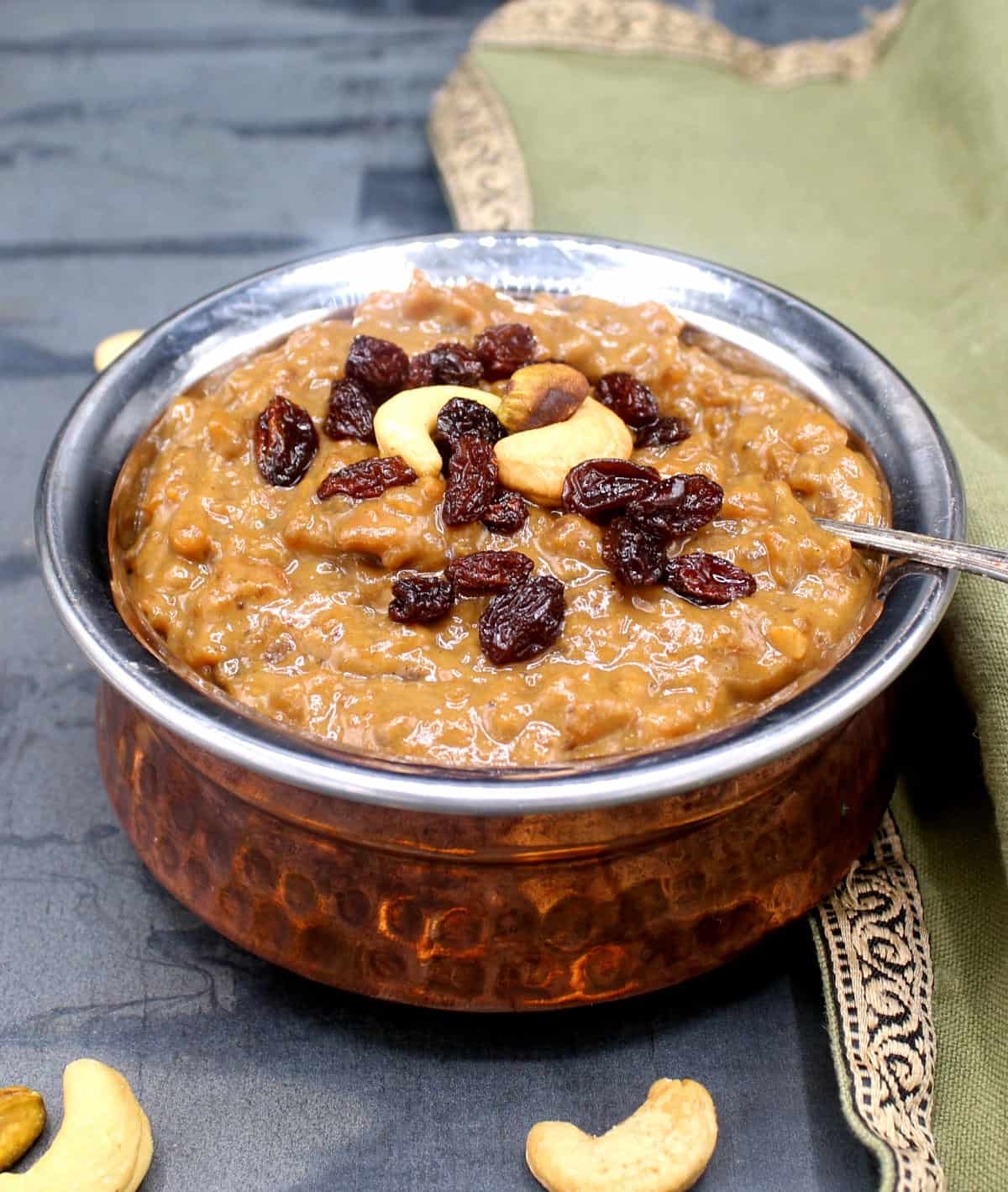
What is pongal?
The passing of the winter solstice kicks off India's legendary love for celebrations. Farmers, and everyone else, give their thanks for the end of the harvest with festivals that go by different names across different states: makar sankranti, lohri, ugadi and bihu, among others.
The state of Tamil Nadu, in south India, celebrates the end of the harvest with a festival named pongal. And to give thanks, they cook up two very special dishes with lentils and the newly harvested rice: ven pongal, or savory pongal, and sakkarai pongal, or sweet pongal.
"Ponga," in Tamil, means to overflow, and cooking pongal after the harvest signifies prosperity and abundance. In south Indian homes, cooks heat milk and rice for pongal in a clay pot and let it boil over in symbolic celebration as cries of "Pongalo, pongal!" ring out.
My husband, Desi, is Tamil and although he couldn't be bothered with symbolisms and celebrating anything, we do celebrate great food. And pongal certainly is that.
To make sakkarai pongal you need just a few ingredients, with the chief ones being rice, moong dal (yellow mung lentils) and jaggery, an unrefined sugar made with palm sap or sugarcane juice. There is one more ingredient that is always touted as a must for pongal because it doesn't just act as a cooking medium, but as a powerful flavoring agent: ghee.
Most cooks use as much as a cup of ghee in a sakkarai pongal recipe, turning what could be a healthy-ish treat into an unhealthy indulgence.
On Holy Cow Vegan we don't use ghee because we love cows. In the early years of this blog I came up with a ghee-free vegan sweet pongal that tastes amazing. I've since made quite a few changes to that recipe to make it even yummier and more authentic-tasting, while still keeping it free of any dairy products. Try it, and I am sure you'll agree!
Why you will love this sakkarai pongal recipe
- Dairy-free but delicious. There is no milk nor ghee in this recipe, but our cruelty-free pongal is just as yummy as the other version.
- Simple, with just a handful of pantry ingredients needed. If you are an Indian cook or have a well-stocked pantry of Indian ingredients, you can likely make this sweet pongal with what you already have on hand. Or you can easily buy them online or at an Indian grocery store.
- Everyone-friendly. The sweet pongal is gluten-free, dairy-free and vegan. If you are nut-free, just leave out the cashews and garnish instead with pumpkin seeds.
Expert tips
Making the best sakkarai pongal is a process involving a few steps but it really isn't difficult and you can make an amazing, authentic pongal in about an hour. Be sure to follow these tips for success:
- Use the correct proportions of ingredients. Use a dal to rice ratio of 1:4 and a rice to jaggery ratio of 1:2 by volume. In this recipe we will use one-fourth of a cup of moong dal, one cup of rice and two cups of jaggery.
- Use a short-grain rice or medium-grain rice. The consistency of the perfect sweet pongal should be runny and glutinous and you should hardly be able to discern the rice and lentils. Think risotto, not biryani.
- Cook the rice and lentils in milk. I use cashew milk or oat milk. When the rice and lentils cook in milk they become silkier and more flavorful.
- Cook the rice and lentils until really, really soft. You can pressure-cook the rice and moong dal in a stove top pressure cooker or an Instant Pot or a rice cooker. Or, if you don't have any of these, use a heavy saucepan with a tight lid. The rice and lentils should literally be melting in the milk when you turn off the heat.
- Cook the jaggery thoroughly. Because jaggery is an unrefined sugar it has a raw flavor. Before adding it to sweet dishes it is best to cook the jaggery thoroughly. I'll show you how, but don't be tempted to cut the process short if you want the best flavor.
- Take your time. Once you put the lentils and rice together with the jaggery, take 10-15 minutes to cook them together to allow the flavors to meld.
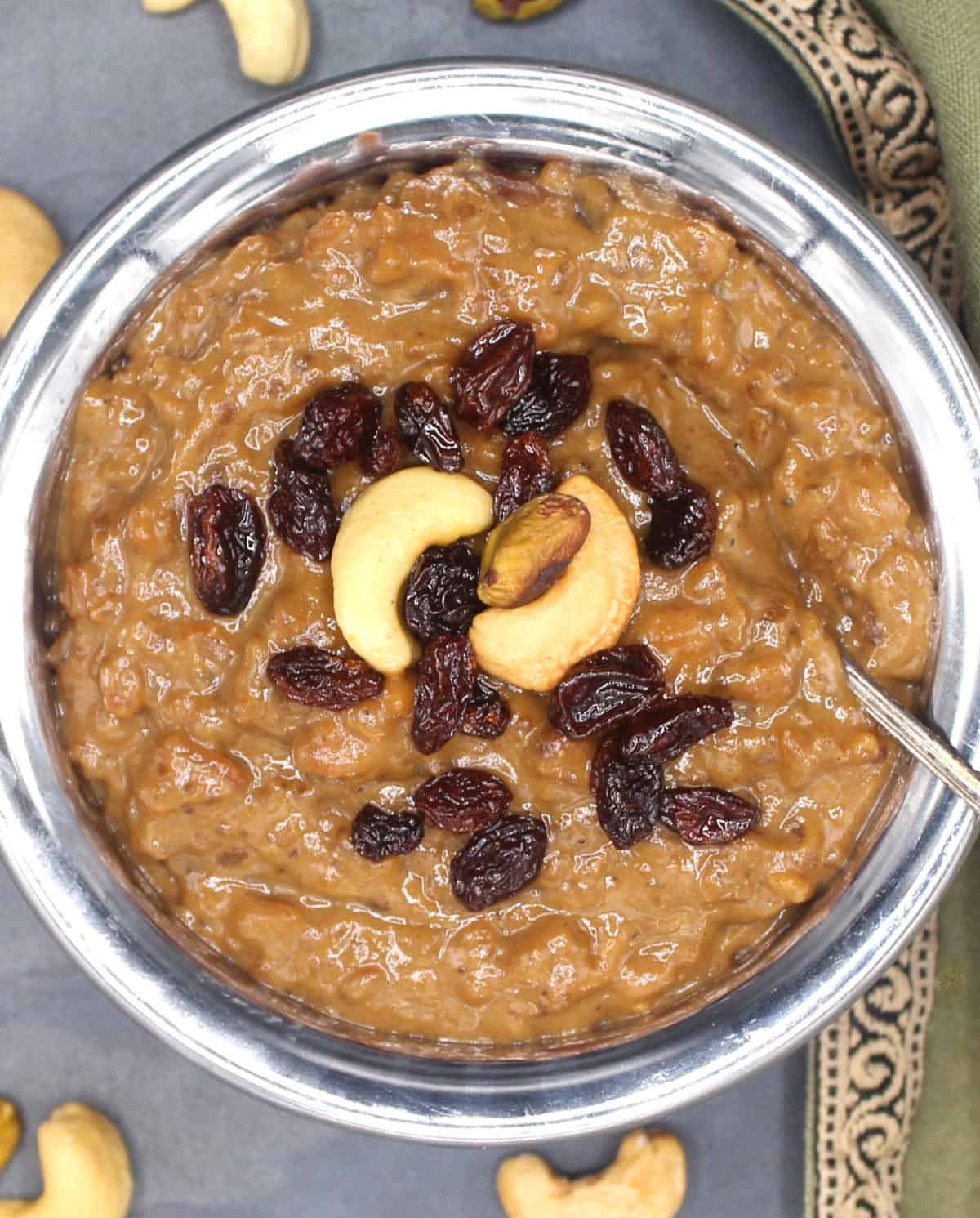
Ingredients
Skip over to the recipe card for exact quantities of each ingredient.
- Rice. Ponni raw rice, usually available at Indian grocery stores here in the United States, is the perfect rice for pongal. You can also use sona masoori or, if you have arborio rice on hand, use that (that's what I often use and it works perfectly).
- Moong dal. These tiny yellow lentils are easily available online or at Indian stores.
- Jaggery (vellam/gur). Jaggery, an unrefined Indian sugar, is necessary for the right flavor and texture in a pongal. Again, you can easily find it online or at an Indian store. Jaggery is sold as lumps or in powder form. I buy the powder because it's much easier to use.
- Green cardamom powder (elakkai/elaichi). When you see "ground cardamom" in an Indian recipe, it almost always refers to ground green cardamom seeds, not black or brown cardamom, which are used whole in savory dishes. You can buy ground cardamom, but I prefer buying green cardamom pods, peeling and crushing the seeds in a mortar and pestle right before I add them to a recipe for the best flavor.
- Nutmeg (jathika/jaifal). Nutmeg is another necessary "sweet" spice for pongal. You need just a little but it adds great flavor. Again, it's best to buy whole nutmeg instead of nutmeg powder and grate a bit of it before use. Some cooks add cloves and edible camphor (pachchai karpooram), an extract from the camphor tree that has a very distinctive aroma, to pongal. Desi hates it so I leave it out.
- Pure vanilla extract. This is not a traditional ingredient, but it's one of my secret ingredients for Indian recipes where I am replacing ghee (you already know that if you've made my vegan kheer). A tiny splash of vanilla added to sweet pongal at the end of cooking makes all the difference.
- Raw cashews. Use whole cashew nuts or cashew pieces. I prefer the latter.
- Raisins. Raisins are a must in chakkara pongal for an authentic flavor. Golden raisins are traditional, but I use whatever kind I have on hand.
Variations for special diets
- Nut-free: Use pumpkin seeds instead of cashews, and oat milk or soy milk instead of cashew milk.
- Low-oil: There are just two tablespoons and a teaspoon of oil in this recipe, which is really not much for a dish like this. But if you want to cut down on the oil further use a teaspoon of oil each to fry the moong dal and rice in step 1 and to roast the cashews in step 5, cutting the oil down to just three teaspoons total. I would not recommend making this dish oil-free.
How to make sweet pongal

1. Heat a tablespoon of oil in a pressure cooker or a heavy-bottomed saucepan or in the liner of the Instant Pot set to the saute mode. Add the moong dal and saute until very aromatic and a couple of shades darker. Add the rice and saute for a couple of minutes until the grains turn opaque.
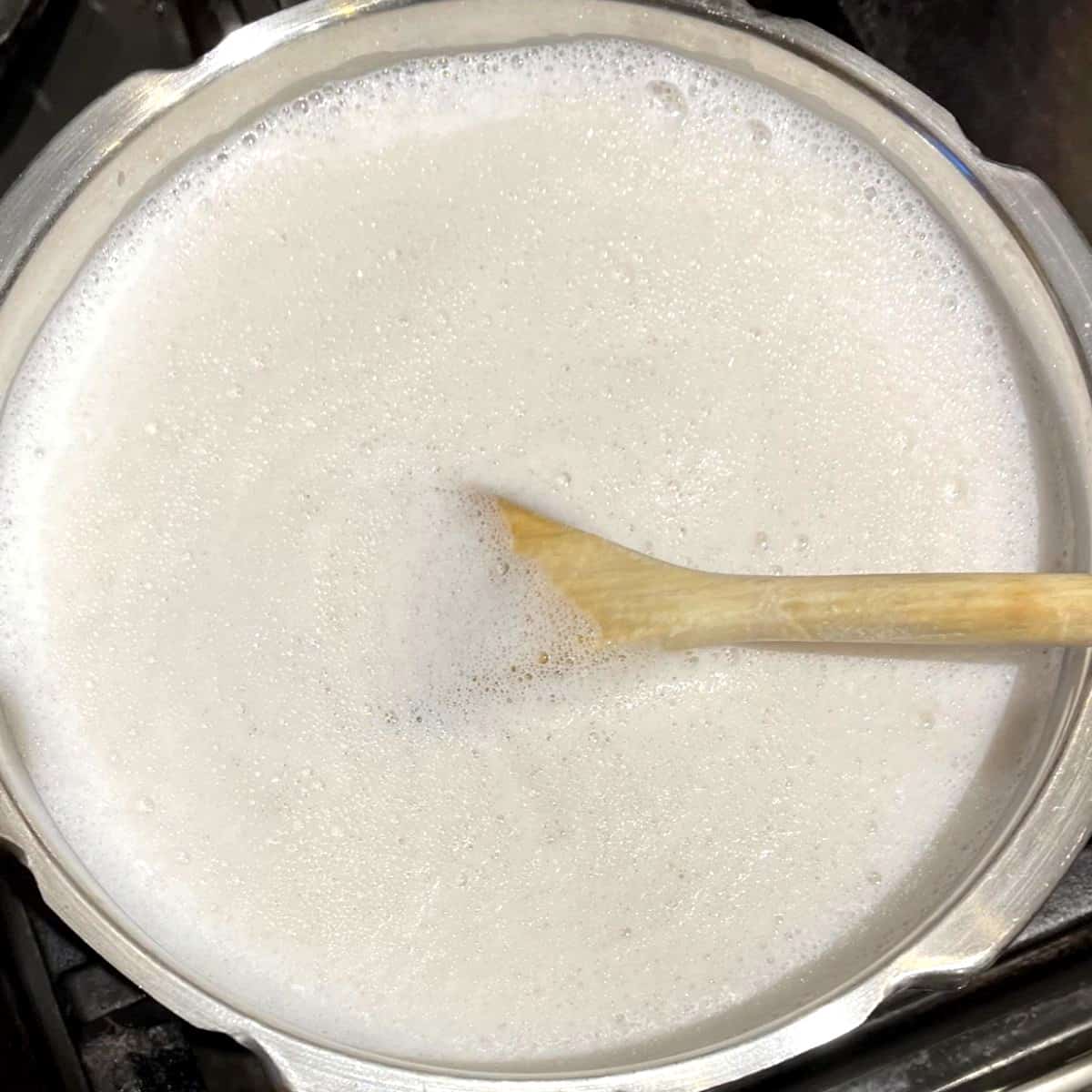
2. Add 4 cups dairy-free milk to the rice and lentils. Mix and cook until the rice and lentils are very, very soft. If doing this in a saucepan you will need about 30 minutes. Cover the pot and stir occasionally during cooking. Add more water or milk if the mixture dries up before it has cooked. In a pressure cooker that whistles, cook for four whistles. In the Instant Pot cook for 15 minutes on manual pressure.
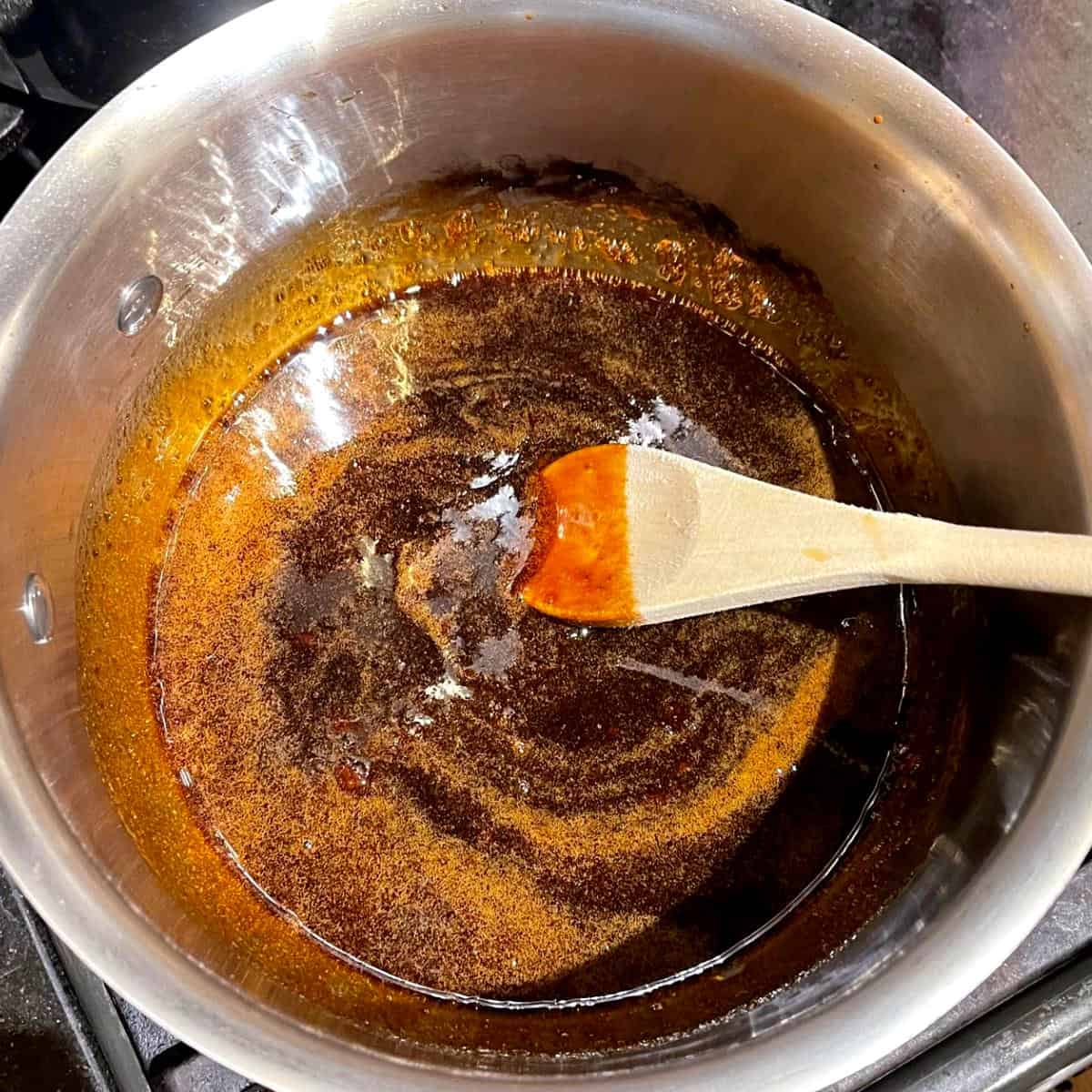
3. Add a quarter cup water to a saucepan, bring to a boil, then add the jaggery. Let the jaggery mixture come to a boil.
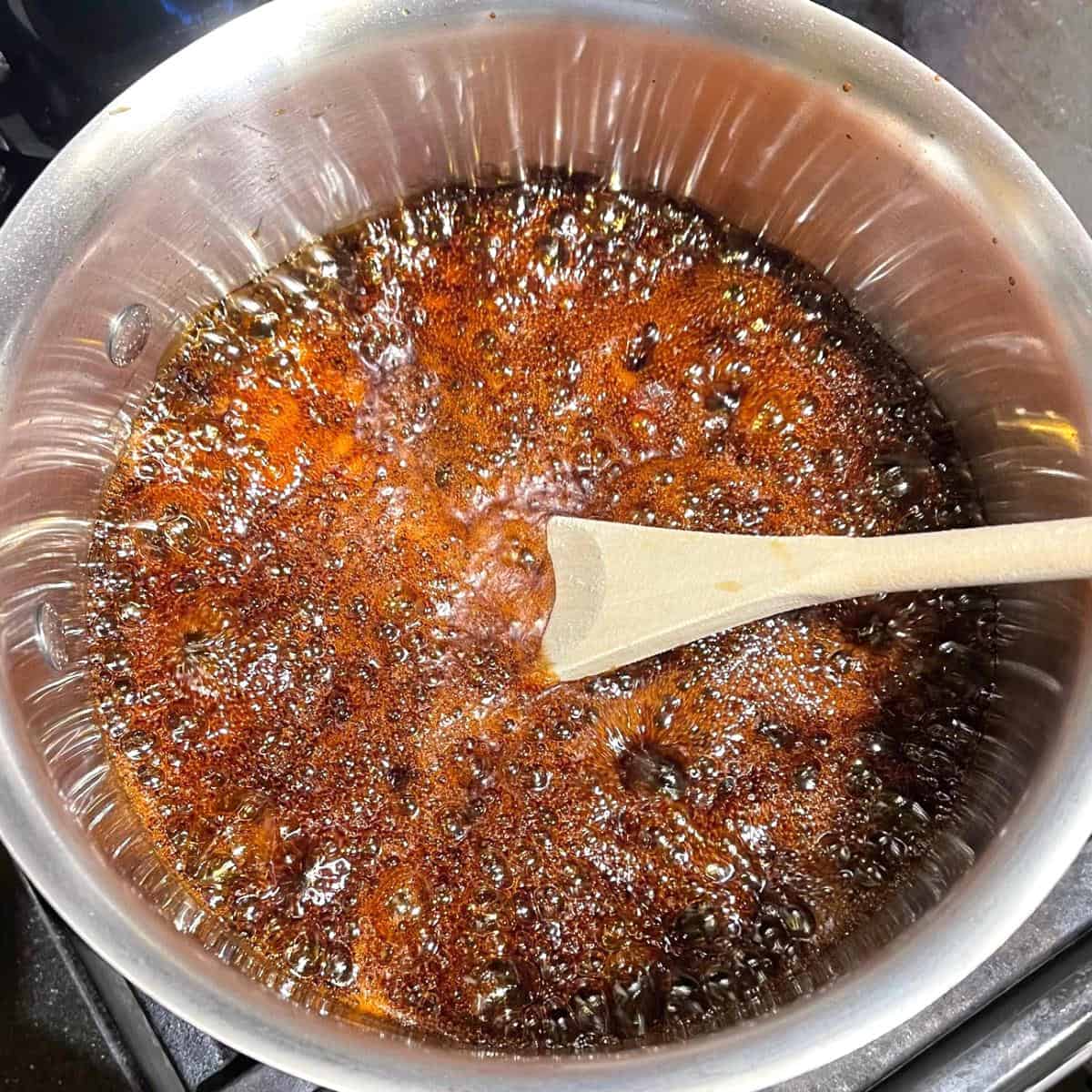
4. Once the jaggery boils, let it continue cooking for six more minutes over medium-low heat. This is really key because you want the jaggery to lose its raw taste. Don't let the jaggery syrup cool down once it's done because it will harden up as it stands.
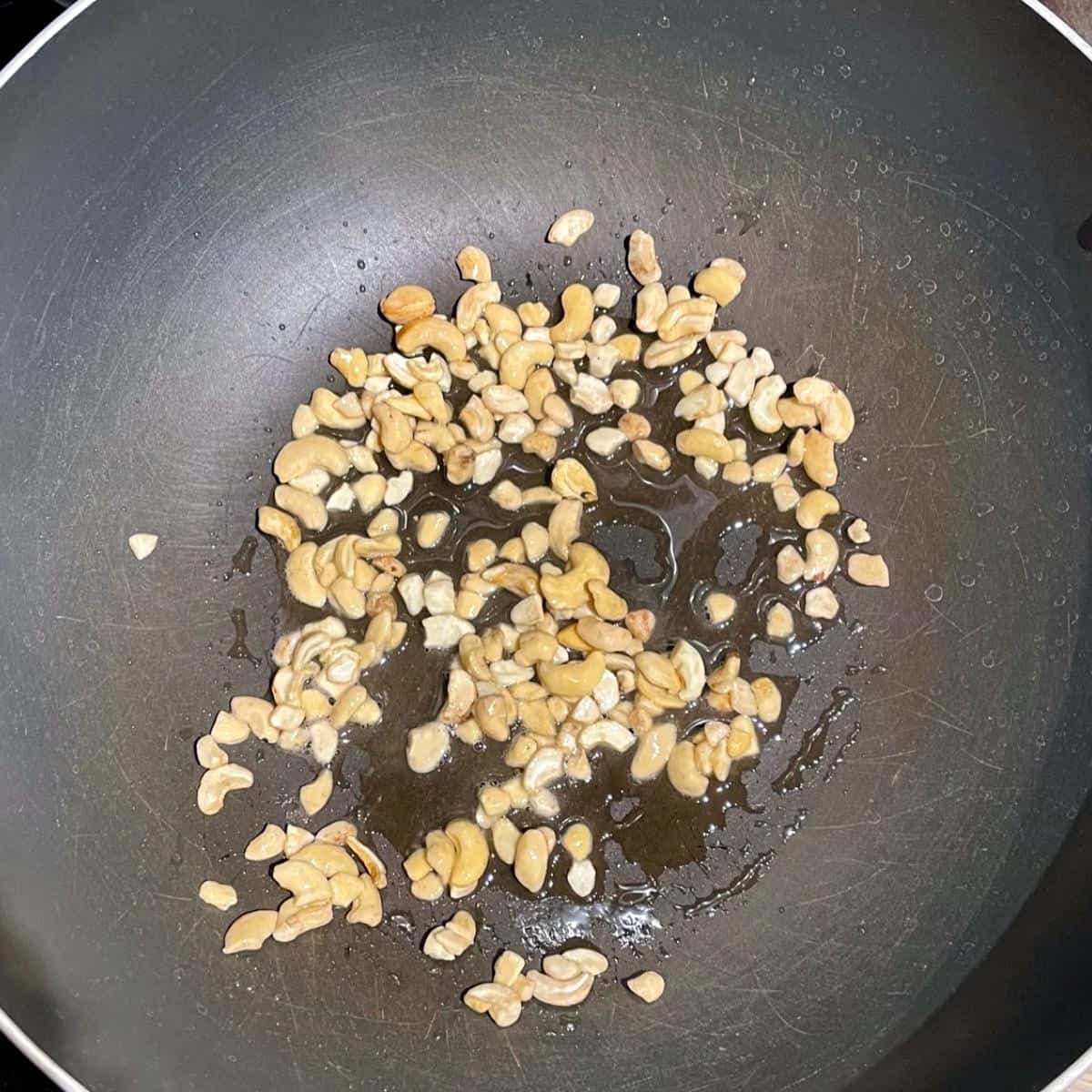
5. About five minutes before the jaggery is cooked, heat a tablespoon of oil in a large wok or kadhai or skillet. Add the cashews and stir-fry for a couple of minutes over medium heat until the cashews are a light golden-brown.
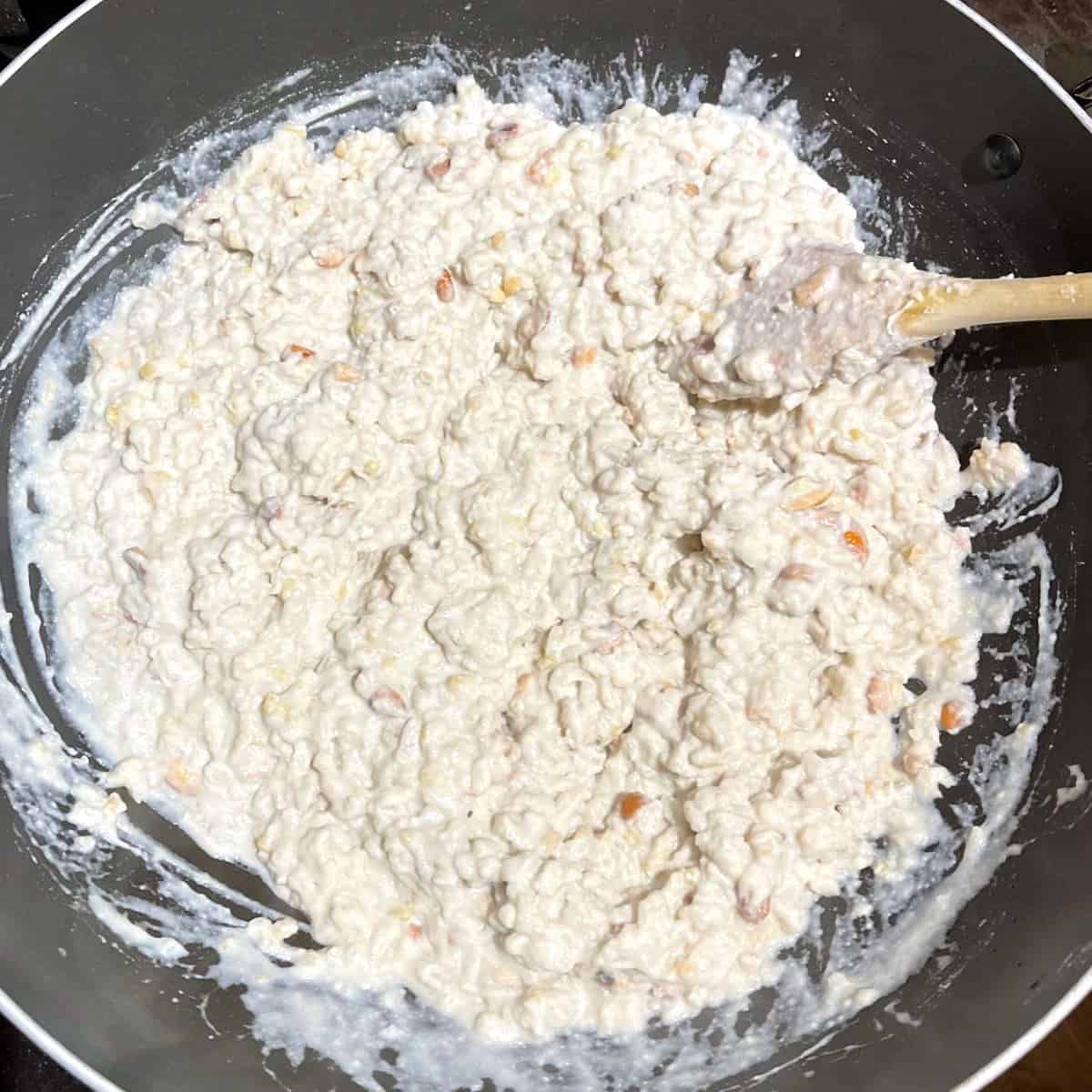
6. Add the cooked rice and dal mixture to the wok with a cup of milk or water. Mix thoroughly and bring to a boil over medium high heat.
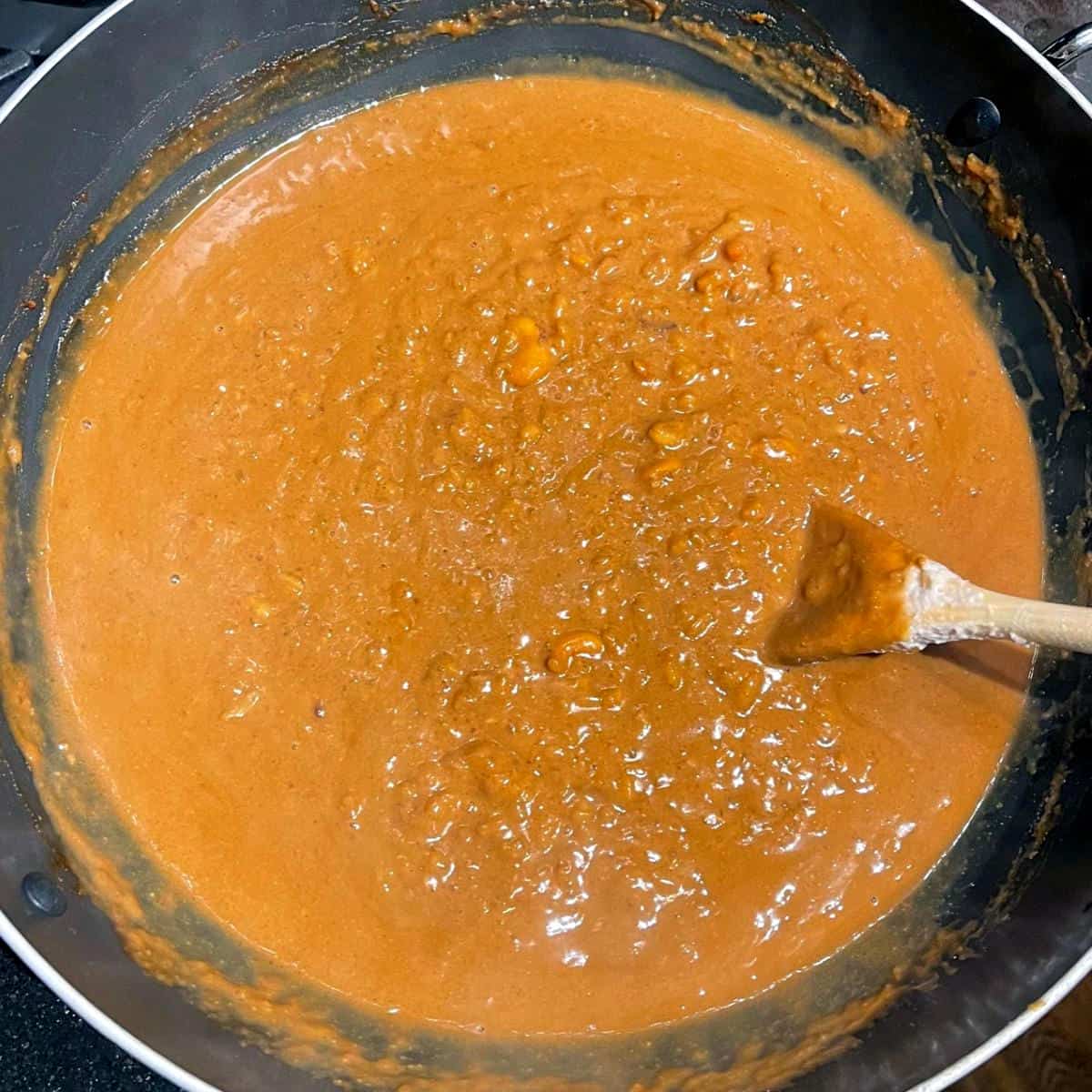
7. Pour in the melted jaggery and mix it into the rice-dal mixture. Bring the pongal to a boil. If the mixture looks dry add some more water or milk.
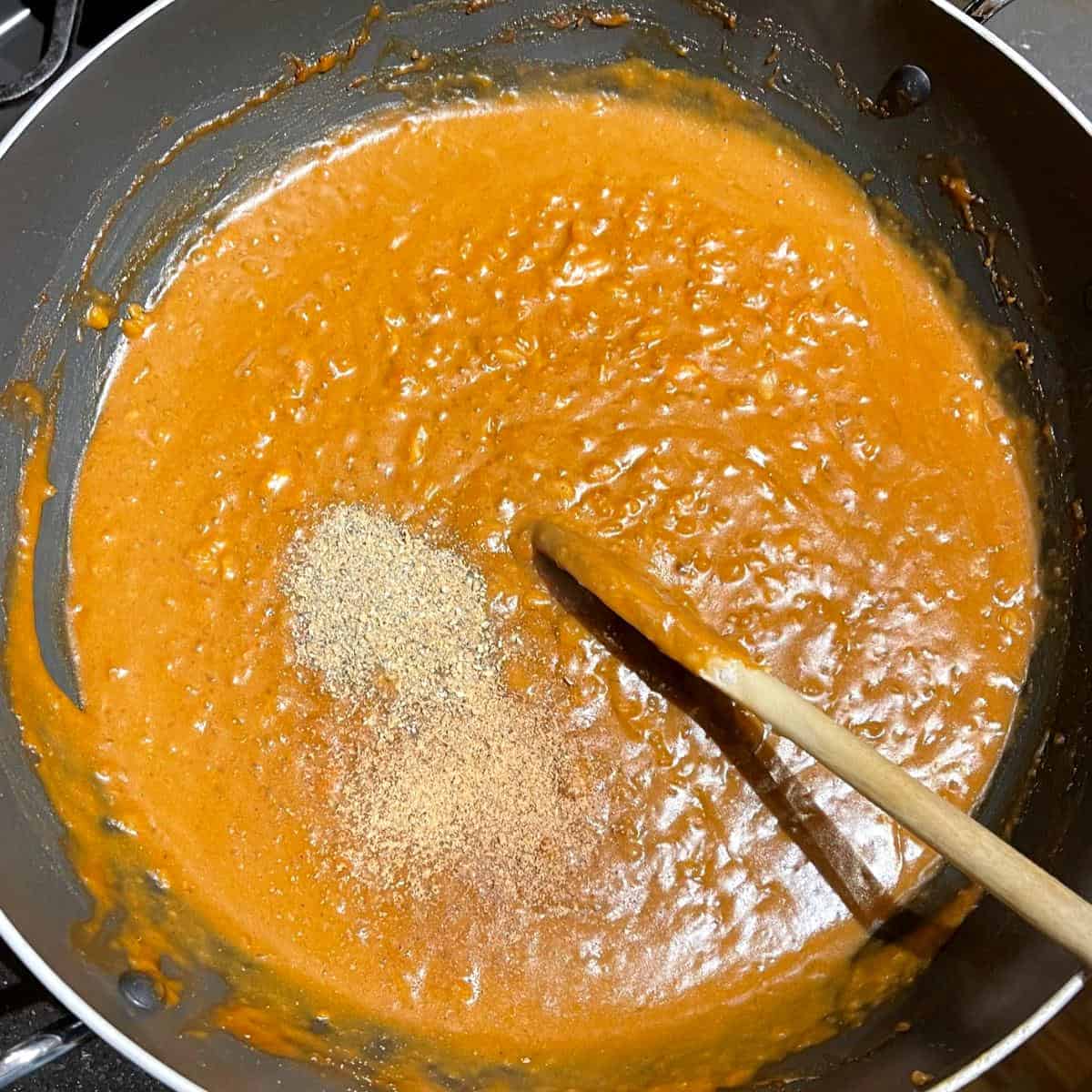
8. Once the pongal has been cooking for about five minutes, stir in the ground nutmeg and ground cardamom.
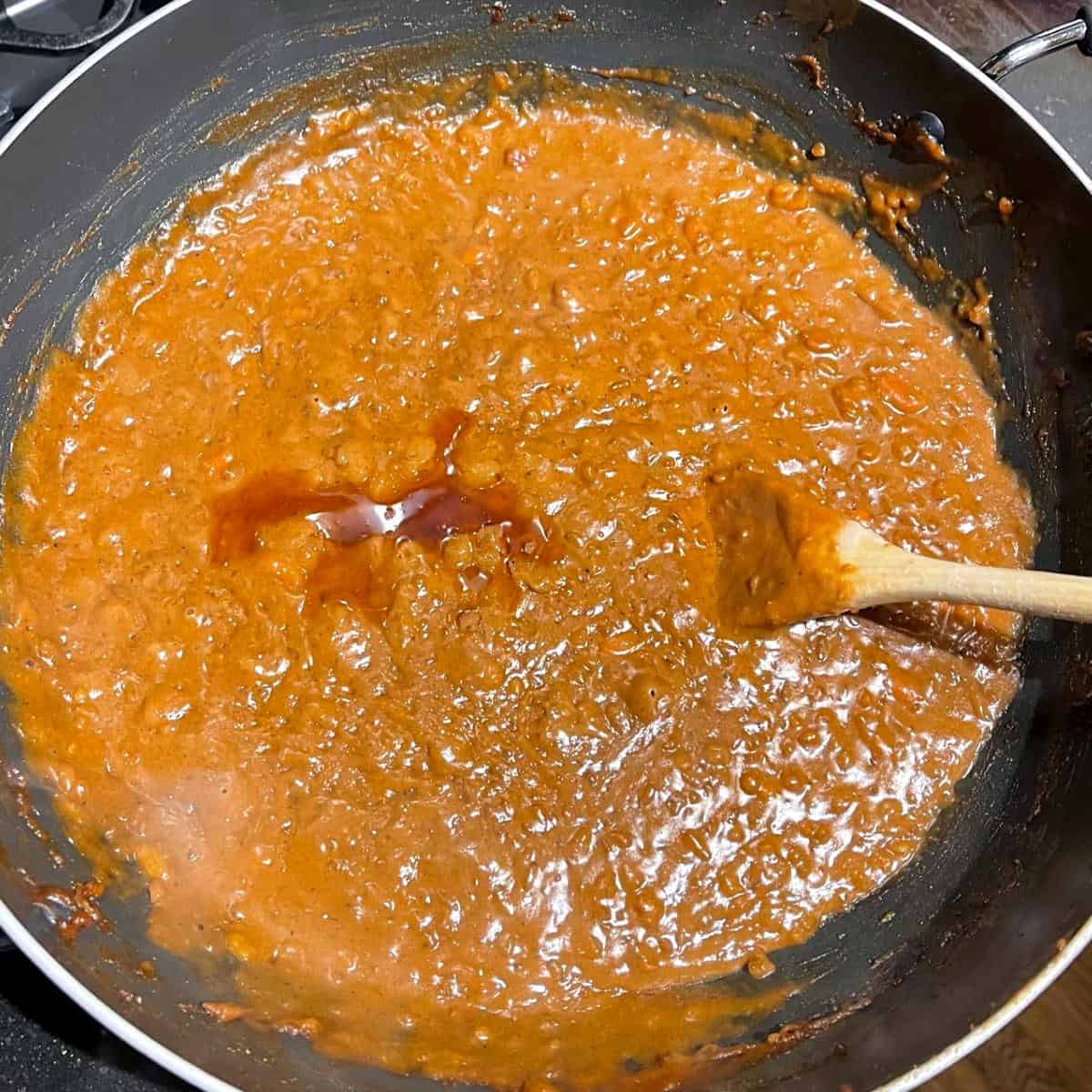
9. Continue cooking the pongal a couple more minutes, stirring frequently, until the mixture has thickened and has the consistency of a thick pudding. At this point you can add a pinch of salt to help accentuate the sweetness of the pongal. Turn off the heat and stir in the pure vanilla extract.
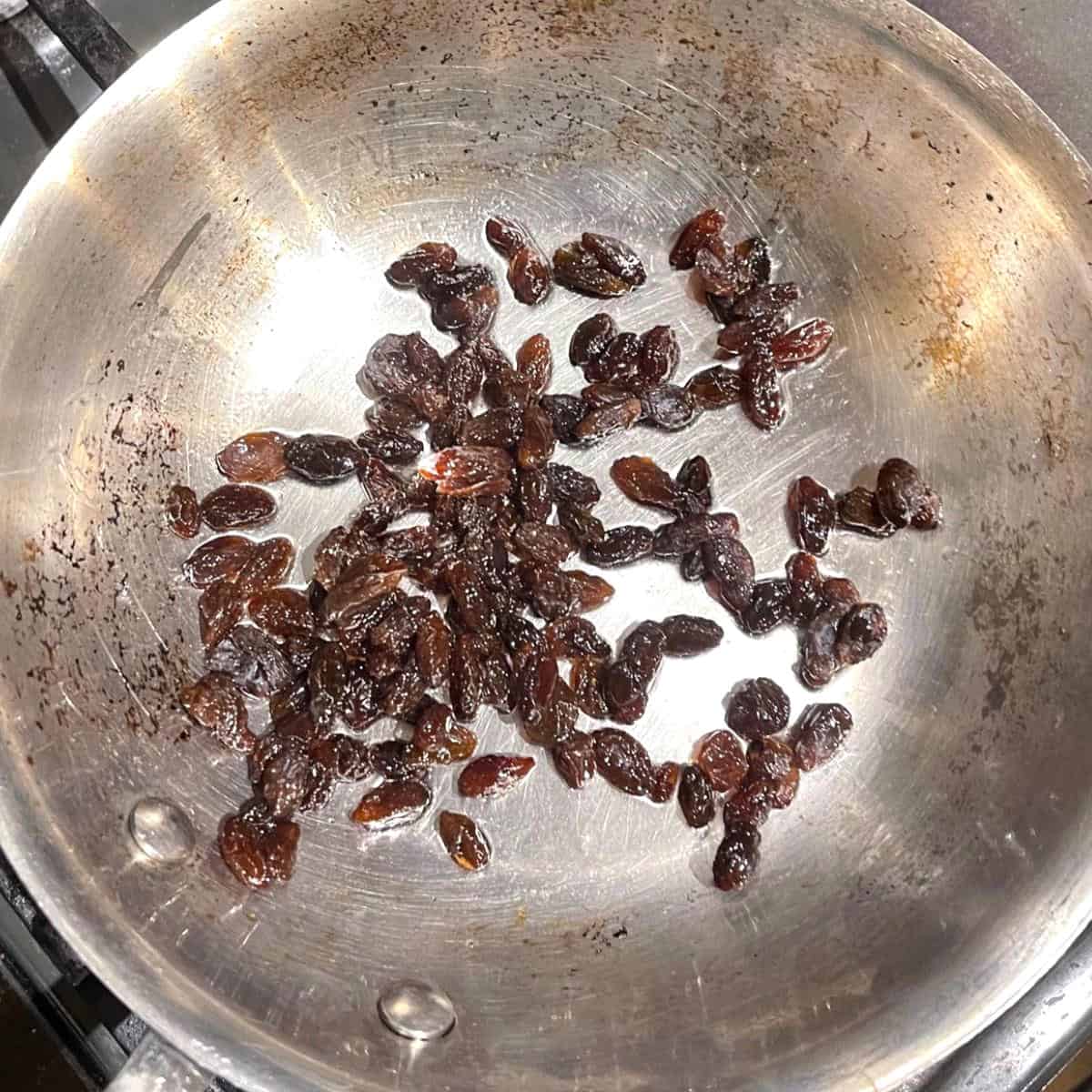
10. Heat a small skillet and add a teaspoon of oil. Roast the raisins in the oil for just a minute until puffy but not burnt. Add them to the pongal and stir in. Serve the pongal warm or at room temperature.
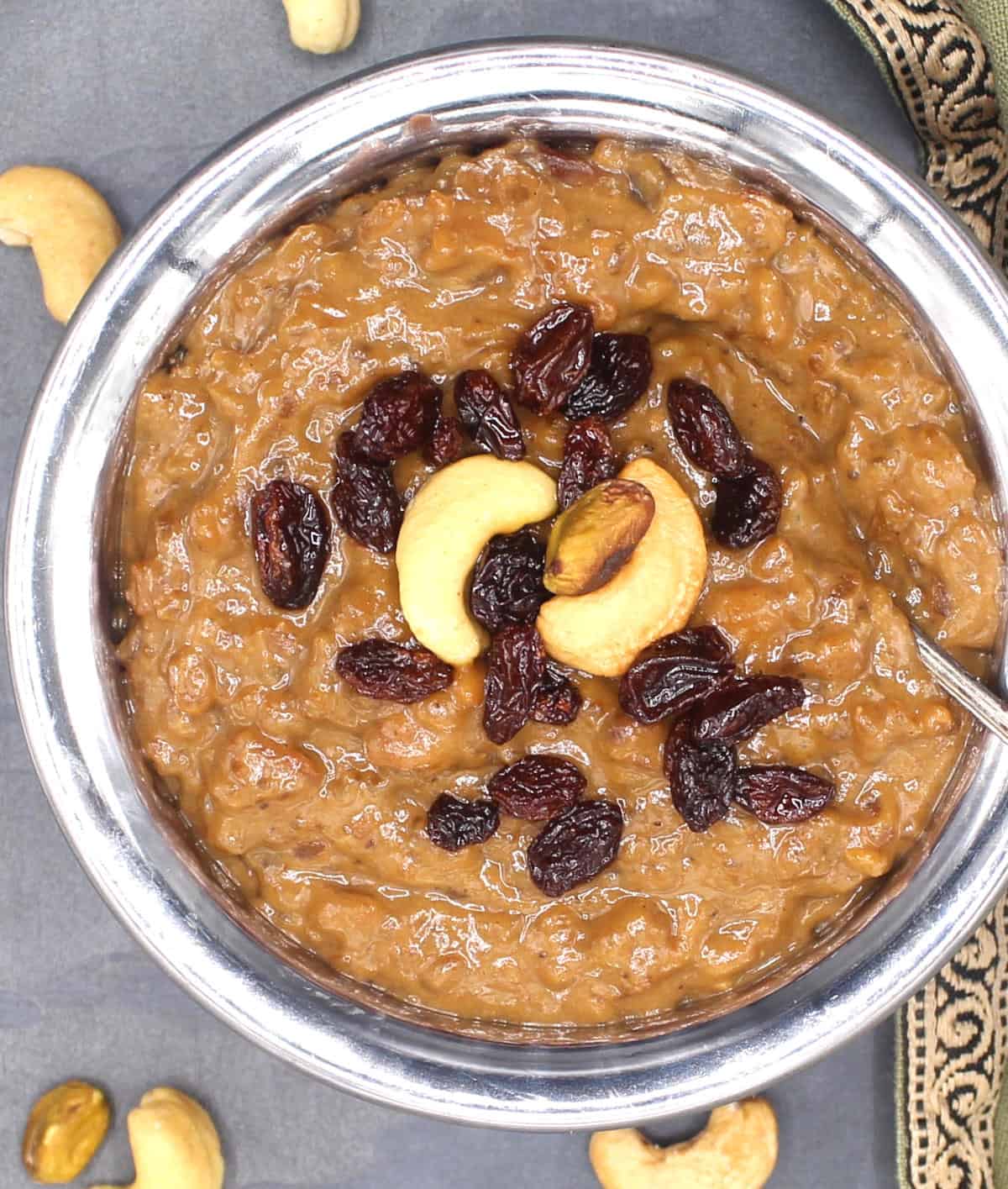
Recipe FAQ
Pongal is a festival of well-being and abundance and the liberal use of ghee in this dish is meant to signify that abundance. But ghee in India today signifies something completely different: it is the product of terrible cruelty and the suffering of Indian cows. Most Indian milk comes from tabelas -- Indian dairy factory farms that treat the cows as tools for profit and abuse them in unthinkable ways. Unfortunately, those who worship cows as holy and seek to "protect" them from religions that have traditionally eaten beef in India also enthusiastically endorse the liberal use of milk products in Hindu households and festivals. It's time to end this hypocrisy. Milk and beef both hurt cows, and eating one is no better than eating the other. A festival -- a time of celebration -- is a great time to say "no" to the cruelty and "yes" to small adjustments in our diets that can impact animals, the environment, and our health in positive ways.
This vegan sakkarai pongal is definitely healthier than the traditional pongal made with tons of ghee and, sometimes, milk. That said, although there are healthy rice and lentils in this dish, and there is an unrefined sugar, sugar is still sugar, so eat this dish in moderation. Enjoy every bite, but don't overindulge.
In my old version of sakkarai pongal I used coconut milk and coconut oil. While coconut is great in south Indian foods, I was not completely happy with the result because coconut tends to add a nice but overwhelming flavor that takes away from the authentic taste of pongal. So I don't recommend it anymore, although if that's your only option you can use it. You can also use coconut oil instead of a neutral oil, which I recommend.
Regular granulated sugar simply won't give you the same flavor as jaggery. If you don't have any jaggery or can't source it, you can use coconut sugar, which will taste pretty good. Cook the coconut sugar exactly as you would use the jaggery. Or, if you have access to a Mexican grocery store, use piloncillo, which is very much like jaggery.
Storage instructions
- Refrigerate: Store sakkarai pongal in the fridge for up to four days.
- Freeze: Freeze the pongal in an airtight container or freezer-safe container for up to four months.
- Reheat: Thaw and reheat the pongal in a saucepan or in the microwave. If needed add a bit of milk or water to return it to a pudding-like consistency.
More delicious Tamil recipes
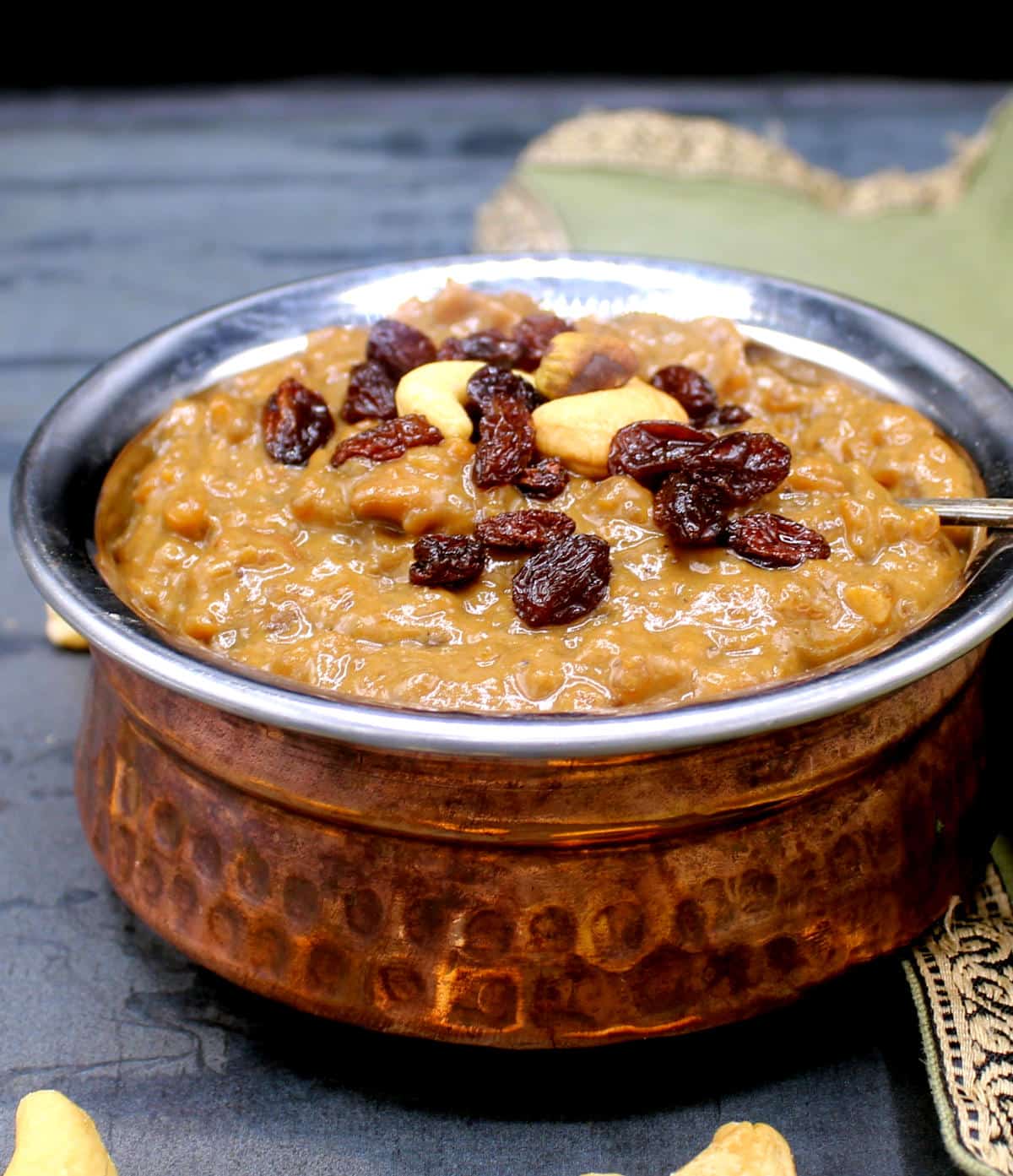
Did you make this recipe? Leave a review and a star rating below or tag us on Instagram! Thanks!

Sweet Pongal (Sakkarai Pongal)
Equipment
-
Large skillet or wok or kadhai
-
Small saucepan
-
Pressure cooker or heavy-bottomed saucepan with lid
Ingredients
- 1 cup rice (uncooked. Use any short-grain or medium grain rice that will easily express its starches. Ponni rice is great for pongal, as is sona masoori. Or use arborio, the Italian short-grain rice used to make risotto).
- 6 cups oat milk or cashew milk on any non-dairy milk of choice.
- 2 tablespoons + 1 tsp neutral oil (like avocado oil, sunflower oil, grape seed oil or safflower oil).
- ¼ cup moong dal (uncooked)
- 2 cups jaggery
- 3 teaspoons ground cardamom
- ¼ teaspoon ground nutmeg
- 1 teaspoon pure vanilla extract
- ½ cup raw cashew pieces
- ¼ cup raisins
Instructions
-
Heat a tablespoon of oil in a pressure cooker or a heavy-bottomed saucepan or in the liner of the Instant Pot set to the "saute" function. Add the moong dal and saute until very aromatic and a couple of shades darker. Add the rice and saute for a couple of minutes until the grains turn opaque.
-
Add 4 cups dairy-free milk to the rice and lentils. Mix and cook until the rice and lentils are very, very soft. If doing this in a saucepan you will need about 30 minutes. Cover the pot and stir occasionally during cooking. Add more water or milk if the mixture dries up before it has cooked. In a pressure cooker that whistles, cook for four whistles. In the Instant Pot cook for 15 minutes on manual pressure.
-
Add a quarter cup water to a saucepan, bring to a boil, then add the jaggery. Let the jaggery mixture come to a boil.
-
Once the jaggery boils, let it continue cooking for six more minutes over medium-low heat. This is really key because you want the jaggery to lose its raw taste. Don't let the jaggery cool down once it's done because it will harden up as it stands.
-
About five minutes before the jaggery has cooked, heat a tablespoon of oil in a large wok or kadhai or skillet. Add the cashews and stir-fry for a couple of minutes over medium heat until the cashews are a light golden-brown.
-
Add the cooked rice and dal mixture to the wok with a cup of milk or water. Mix thoroughly and bring to a boil over medium high heat.
-
Pour in the melted jaggery and mix it into the rice and dal mixture. Bring the pongal back to a boil. If the mixture looks dry add some more water or milk.
-
Once the pongal has been cooking for about five minutes, stir in the ground nutmeg and ground cardamom.
-
Continue cooking the pongal a couple more minutes, stirring frequently, until the mixture has thickened and has the consistency of a thick pudding. Add a very tiny pinch of salt at this point, to accentuate the sweetness of the pongal. Turn off the heat and stir in the pure vanilla extract.
-
Heat a small skillet and add a teaspoon of oil. Roast the raisins in the oil for just a minute until puffy but not burnt. Add them to the pongal and stir in.
-
Serve the sweet pongal warm or at room temperature.
Nutrition
The post Sweet Pongal (Sakkarai Pongal) appeared first on Holy Cow Vegan.
The post Sweet Pongal (Sakkarai Pongal) appeared first on Holy Cow Vegan.

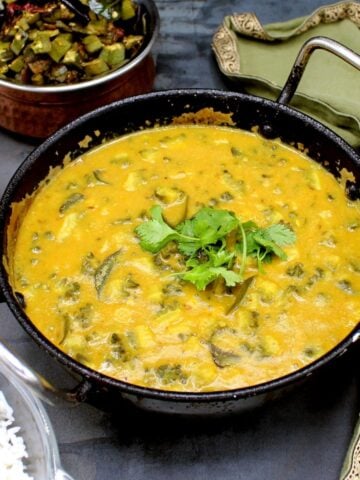
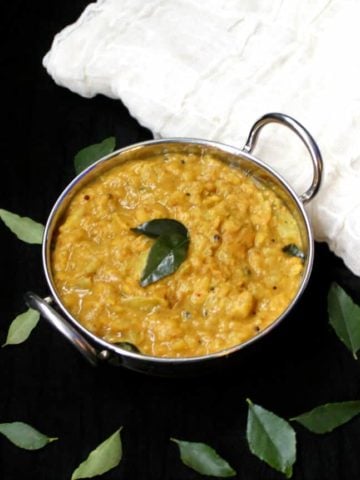
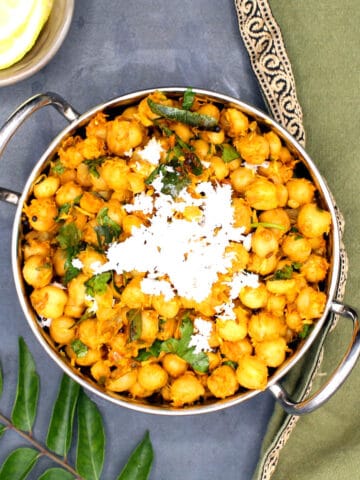

0 Comments